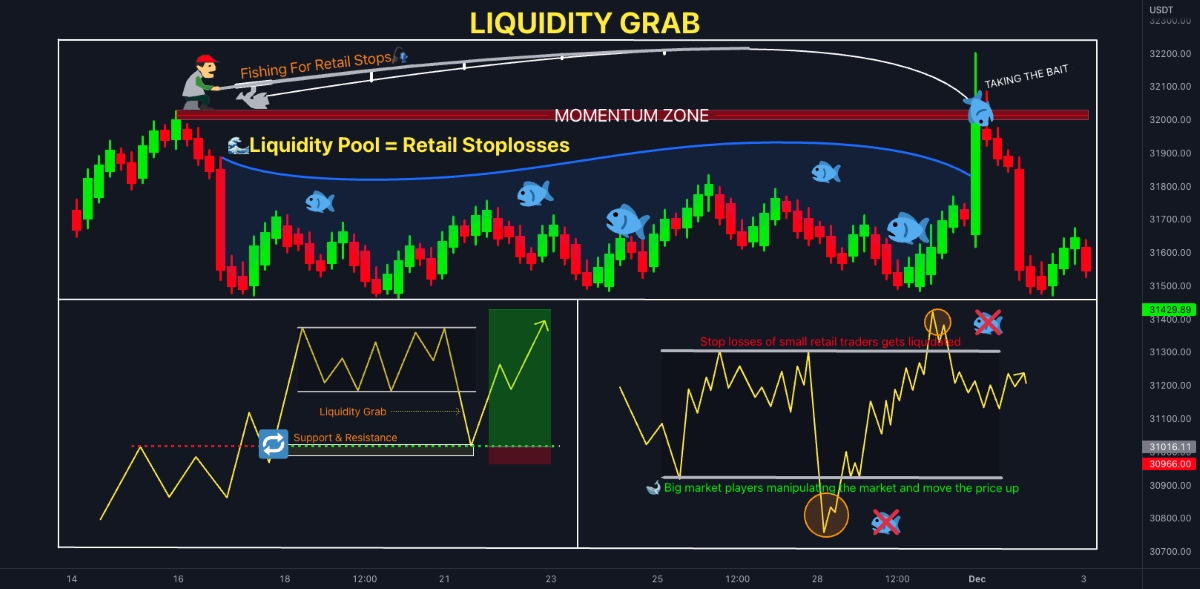

Finance
What Is Order Of Liquidity?
Published: February 23, 2024
Learn all about the order of liquidity in finance and understand its significance in managing financial assets. Explore the concept and its practical applications.
(Many of the links in this article redirect to a specific reviewed product. Your purchase of these products through affiliate links helps to generate commission for LiveWell, at no extra cost. Learn more)
Table of Contents
Introduction
Welcome to the fascinating world of finance, where liquidity plays a pivotal role in shaping the dynamics of investments and financial markets. Understanding the concept of liquidity and its order is crucial for investors, financial analysts, and anyone interested in comprehending the intricacies of the financial landscape. This article aims to unravel the significance of liquidity and delve into the concept of order of liquidity, shedding light on its implications and real-world applications.
Liquidity is a fundamental concept in finance, referring to the ease with which an asset can be converted into cash without significantly impacting its market price. In simpler terms, it measures how quickly and efficiently an asset can be bought or sold in the market. Assets with high liquidity can be easily traded, while those with low liquidity may encounter challenges in finding buyers or sellers at a desired price.
The importance of liquidity cannot be overstated, as it directly influences the stability and efficiency of financial markets. Investors and financial institutions rely on liquidity to meet their short-term obligations, manage risk, and capitalize on investment opportunities. Moreover, liquidity is a key determinant of an asset's value and plays a crucial role in the pricing and trading of securities.
In the realm of finance, the order of liquidity refers to the ranking of assets based on their ease of conversion into cash. This concept provides valuable insights into the hierarchy of assets in terms of their liquidity, guiding investors in making informed decisions and assessing the risk associated with different investment options. By understanding the order of liquidity, individuals can gain a deeper understanding of the market dynamics and make strategic investment choices aligned with their financial goals and risk tolerance.
In the subsequent sections of this article, we will explore the definition of liquidity in greater detail, elucidate the significance of liquidity in financial markets, delve into the concept of order of liquidity, provide illustrative examples, and conclude with a comprehensive understanding of how liquidity and its order shape the financial landscape.
Join me on this enlightening journey as we unravel the intricacies of liquidity and its order, empowering you with valuable insights that can elevate your understanding of the financial world.
Definition of Liquidity
Liquidity, in the realm of finance, refers to the degree to which an asset or security can be quickly bought or sold in the market without causing a significant change in its price. It represents the ease with which an asset can be converted into cash or used to make transactions. Assets with high liquidity are easily tradable, while those with low liquidity may encounter challenges in finding buyers or sellers at a desired price.
There are various factors that contribute to the liquidity of an asset, including the trading volume, bid-ask spread, market depth, and the presence of willing buyers and sellers. High liquidity is synonymous with a liquid market, where assets can be swiftly bought or sold without causing substantial price movements. On the other hand, low liquidity can lead to price volatility and may result in difficulties in executing trades at favorable prices.
One of the key metrics used to assess liquidity is the bid-ask spread, which represents the difference between the highest price that a buyer is willing to pay (bid) and the lowest price that a seller is willing to accept (ask). A narrow bid-ask spread indicates high liquidity, as there is minimal disparity between the buying and selling prices, facilitating seamless transactions. Conversely, a wide bid-ask spread signifies low liquidity, as there is a significant gap between the prices at which buyers are willing to purchase and sellers are willing to sell.
Furthermore, liquidity is a crucial consideration for investors, as it directly impacts the ease of entering or exiting positions in the market. Assets that are highly liquid offer flexibility and enable investors to swiftly adjust their portfolios based on changing market conditions or investment objectives. Conversely, illiquid assets may restrict investors’ ability to buy or sell at desired prices, potentially leading to delays in executing trades or incurring higher transaction costs.
In essence, liquidity serves as the lifeblood of financial markets, fostering efficiency, stability, and confidence among market participants. It underpins the smooth functioning of trading activities, supports price discovery mechanisms, and enables investors to deploy their capital effectively. As we delve deeper into the concept of liquidity and its order, it becomes evident that understanding the liquidity of assets is paramount for making informed investment decisions and navigating the complexities of the financial landscape.
Importance of Liquidity
Liquidity holds immense significance in the realm of finance, exerting a profound impact on the efficiency, stability, and functionality of financial markets. Understanding the importance of liquidity is essential for investors, financial institutions, and policymakers, as it influences various aspects of investment strategies, risk management, and market dynamics.
First and foremost, liquidity plays a pivotal role in facilitating the smooth operation of financial markets. It enables market participants to swiftly buy and sell assets, thereby ensuring the seamless flow of capital and the efficient allocation of resources. A liquid market fosters price transparency, as assets can be traded at prevailing market prices without substantial price fluctuations, promoting fair and equitable transactions.
Moreover, liquidity enhances market efficiency by supporting price discovery mechanisms. In liquid markets, the bid-ask spread tends to be narrow, reflecting the availability of buyers and sellers and minimizing the impact of individual trades on asset prices. This fosters an environment where asset prices accurately reflect supply and demand dynamics, enabling investors to make well-informed decisions based on real-time market conditions.
For investors and fund managers, the importance of liquidity is underscored by its role in portfolio management and risk mitigation. Highly liquid assets offer flexibility, allowing investors to adjust their portfolios in response to changing market conditions, capitalize on investment opportunities, or meet short-term liquidity needs. Additionally, liquidity provides a layer of protection against unforeseen circumstances, as it enables investors to exit positions swiftly in the event of market volatility or adverse developments.
Financial institutions also rely on liquidity to meet their short-term obligations and manage liquidity risk. Adequate liquidity ensures that institutions can honor deposit withdrawals, fulfill payment obligations, and navigate fluctuations in funding conditions. Central banks and regulatory authorities closely monitor liquidity conditions to safeguard the stability of the financial system and prevent disruptions that could have systemic implications.
Overall, the importance of liquidity extends beyond its immediate impact on trading activities and investment decisions. It permeates the core of financial markets, influencing market integrity, risk management practices, and the overall resilience of the financial system. As we explore the concept of order of liquidity, it becomes evident that recognizing the importance of liquidity is instrumental in navigating the complexities of the financial landscape and making informed decisions that align with one’s investment objectives and risk tolerance.
Order of Liquidity
The order of liquidity represents the ranking of assets based on their ease of conversion into cash. This concept provides valuable insights into the hierarchy of assets in terms of their liquidity, guiding investors in making informed decisions and assessing the risk associated with different investment options. Understanding the order of liquidity is instrumental in evaluating the tradability and marketability of assets, thereby influencing portfolio construction, risk management strategies, and investment decision-making.
Assets are typically categorized into different levels of liquidity, forming a hierarchy that reflects their ease of conversion into cash. At the top of the order of liquidity are cash and cash equivalents, which encompass currency, bank deposits, and highly liquid short-term instruments such as Treasury bills and commercial paper. These assets are readily accessible and can be swiftly converted into cash without incurring significant transaction costs or price discounts, making them the most liquid instruments.
Following cash and cash equivalents are marketable securities, including stocks and bonds traded on public exchanges. While these assets are highly liquid due to their active trading in the secondary market, their liquidity may be influenced by factors such as trading volume, market depth, and prevailing market conditions. Blue-chip stocks and government bonds are often considered more liquid than securities of smaller companies or lower-rated bonds.
Further down the order of liquidity are assets such as real estate, private equity investments, and certain types of bonds that may have limited trading activity or longer settlement periods. These assets are characterized by lower liquidity, as their conversion into cash may entail longer timeframes, transaction complexities, or the need to find suitable buyers or counterparties.
Understanding the order of liquidity is paramount for investors, as it informs their asset allocation decisions, risk management strategies, and the assessment of investment opportunities. By recognizing the liquidity hierarchy of assets, investors can tailor their portfolios to align with their liquidity preferences, investment horizon, and risk tolerance. Additionally, the order of liquidity guides investors in evaluating the potential impact of liquidity constraints on their investment holdings, enabling them to make informed decisions based on their liquidity needs and market conditions.
As we navigate the intricacies of the order of liquidity, it becomes evident that this concept serves as a compass for investors, offering valuable insights into the tradability and market dynamics of various asset classes. By incorporating the order of liquidity into their investment framework, individuals can enhance their understanding of liquidity risk, optimize their portfolio composition, and make strategic investment choices that align with their financial goals and risk appetite.
Examples of Order of Liquidity
To illustrate the concept of order of liquidity, let’s delve into a set of examples that exemplify the varying degrees of liquidity across different asset classes, providing valuable insights into their tradability and marketability.
Cash and Cash Equivalents: At the pinnacle of the order of liquidity are cash and cash equivalents, which encompass physical currency, bank deposits, money market accounts, and highly liquid short-term instruments. These assets are characterized by their immediate accessibility and minimal barriers to conversion into cash. For instance, an individual’s savings account balance represents a highly liquid asset that can be readily withdrawn or used for transactions without encountering significant delays or liquidity constraints.
Marketable Securities: Moving down the order of liquidity, we encounter marketable securities such as publicly traded stocks and bonds. These assets exhibit high liquidity due to their active trading in the secondary market, allowing investors to buy and sell them with relative ease. For example, shares of well-established companies listed on major stock exchanges are considered highly liquid, as they can be traded throughout the trading day at prevailing market prices, enabling investors to swiftly adjust their investment positions based on market conditions.
Real Estate: Real estate assets represent a lower level of liquidity compared to cash and marketable securities. While real estate holdings may have substantial value, their conversion into cash is often associated with longer timeframes and transaction complexities. Selling a property, for instance, typically involves a lengthier process that includes property inspections, negotiations, legal procedures, and finding suitable buyers, resulting in a lower level of liquidity compared to financial instruments.
Private Equity Investments: Private equity investments, which involve ownership stakes in non-publicly traded companies, exhibit even lower liquidity due to their illiquid nature. Investors in private equity funds or direct private investments often face limited opportunities to sell their holdings, as the process of finding buyers or executing private company transactions can be protracted and entail significant hurdles. As a result, private equity investments are positioned lower in the order of liquidity, reflecting the challenges associated with converting these assets into cash.
These examples underscore the diverse spectrum of liquidity across asset classes, highlighting the significance of the order of liquidity in evaluating the tradability and market dynamics of different investments. By understanding the liquidity hierarchy of assets, investors can make informed decisions aligned with their liquidity preferences, investment horizon, and risk tolerance, thereby navigating the complexities of the financial landscape with clarity and foresight.
Conclusion
As we conclude our exploration of liquidity and its order, it becomes evident that these concepts form the bedrock of the financial landscape, influencing investment decisions, risk management strategies, and market dynamics. Liquidity, representing the ease of converting assets into cash, serves as a cornerstone of financial markets, fostering efficiency, stability, and confidence among market participants. The order of liquidity, in turn, provides valuable insights into the hierarchy of assets based on their tradability and marketability, guiding investors in navigating the complexities of the investment landscape.
By comprehending the liquidity of various asset classes and their positioning in the order of liquidity, investors can tailor their portfolios to align with their liquidity preferences and risk tolerance. Highly liquid assets offer flexibility and enable swift adjustments to investment positions, while less liquid assets require careful consideration of liquidity risk and potential impact on portfolio dynamics. Recognizing the importance of liquidity and the order of liquidity empowers individuals to make informed investment decisions, capitalize on opportunities, and mitigate the potential challenges associated with liquidity constraints.
Furthermore, the order of liquidity serves as a compass for investors, offering valuable insights into the tradability and market dynamics of different asset classes. From cash and cash equivalents to marketable securities, real estate, and private equity investments, the diverse spectrum of liquidity across assets underscores the nuanced considerations that underpin investment strategies and risk management approaches.
As we embrace the multifaceted nature of liquidity and its order, it is imperative for investors, financial analysts, and market participants to integrate these concepts into their decision-making processes. By doing so, individuals can enhance their understanding of liquidity risk, optimize their portfolio composition, and make strategic investment choices that align with their financial goals and risk appetite.
In essence, liquidity and its order are not merely abstract concepts; they are integral components that shape the investment landscape and empower individuals to navigate the ebbs and flows of financial markets with prudence and insight. Armed with a comprehensive understanding of liquidity and the order of liquidity, investors can embark on their financial journeys with confidence, equipped to make informed decisions that propel them toward their investment objectives while effectively managing liquidity considerations.














